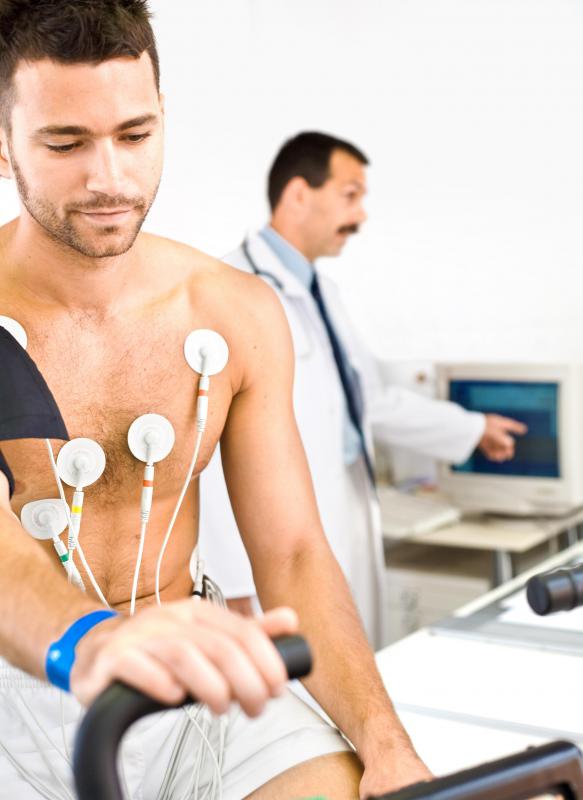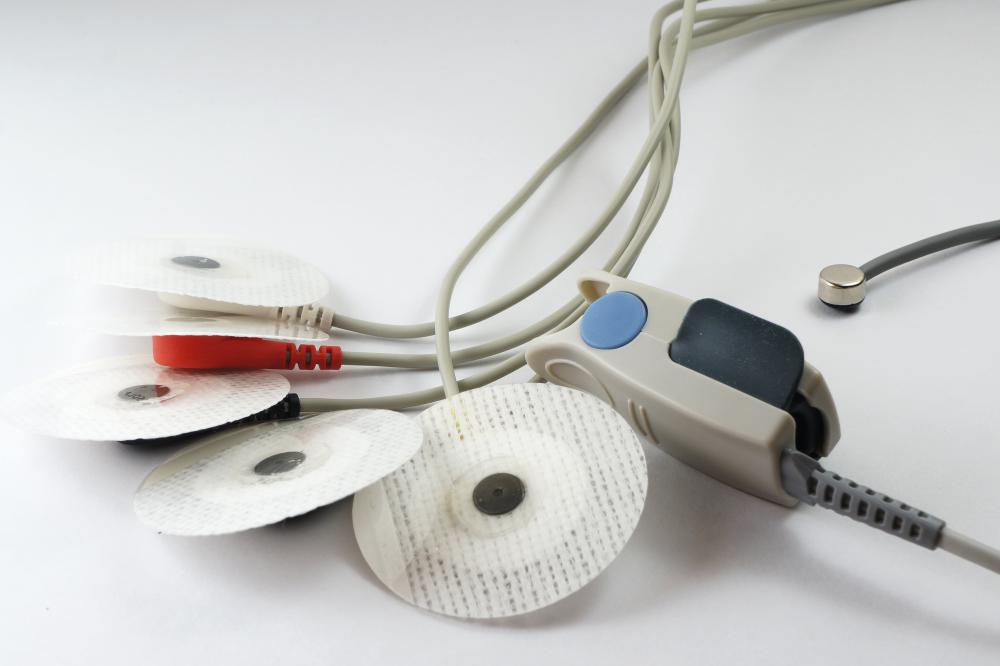At WiseGEEK, we're committed to delivering accurate, trustworthy information. Our expert-authored content is rigorously fact-checked and sourced from credible authorities. Discover how we uphold the highest standards in providing you with reliable knowledge.
What does a Cardiology Technologist do?
Cardiology technologists work with doctors to diagnose and treat heart and blood vessel disorders. They usually work in cardiology departments at hospitals or doctors’ offices. A cardiology technologist is usually a graduate of a two-year medical program with an associate’s degree. For a career as a cardiology technologist, a person must be dependable, mild-mannered, a good communicator and able to follow complex instructions with ease. These qualities will put patients at ease and allow the technologist to accomplish the work as efficiently and successfully as possible.
An invasive cardiology technologist performs procedures that involve insertions into the patient’s body. During invasive surgery, the technologist inserts a catheter tube through the patient’s body, from the artery to the groin to the heart. This is used to determine whether blood vessels are blocked, as a clear path is necessary to deliver blood to the heart. Before the surgery, it is also the invasive cardiology technologist’s duty to prepare the patient, which can involve positioning him or her on the operating table and numbing the region where the catheter is going to be inserted. During the surgery, the technologist must keep track of the patient’s heart rate and blood pressure.

If a catheterization leads to a discovery that a patient’s blood vessels or heart valves are blocked, a balloon angioplasty can be used to unblock these vital parts. Together with a physician, a cardiology technologist inserts another catheter into the patient, but this one has a balloon on the end. The balloon finds the point of obstruction and unblocks it. Another option is an electrophysiology test, which locates the place within the patent’s heart tissue where blocking occurs by finding irregular electrical impulses.

Cardiology technologists can also perform noninvasive surgeries such as an electrocardiogram (EKG). During an EKG, the cardiology technologist places electrodes on the patient’s arms, legs and chest. The technologist then runs the EKG machine, which instructs the electrodes to pick up signals from the heart. The patterns of the patient’s heartbeats are monitored and recorded by the EKG machine.

Although not licensed to actually perform open-heart surgeries, cardiology technologists can prepare patients for these procedures and assist the doctor throughout. Additional duties of the technologist include scheduling appointments, performing ultrasounds, reviewing doctors’ paperwork, sifting through patient files, setting up and cleaning equipment and explaining test procedures. Cardiology technologists spend a lot of time on their feet, and heavy lifting may be required when dealing with certain medical equipment. The potential for radiation exposure is also a hazard of the job. A cardiology technologist usually works 40 hours per week, although he or she may be on call during off-hours as well.
AS FEATURED ON:
AS FEATURED ON:
















Discuss this Article
Post your comments